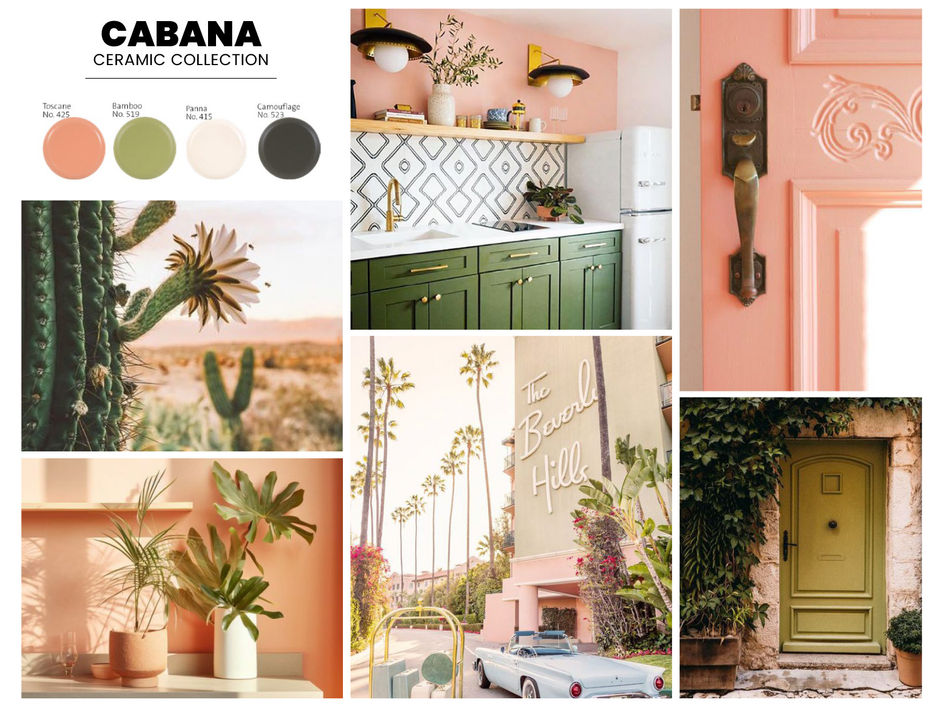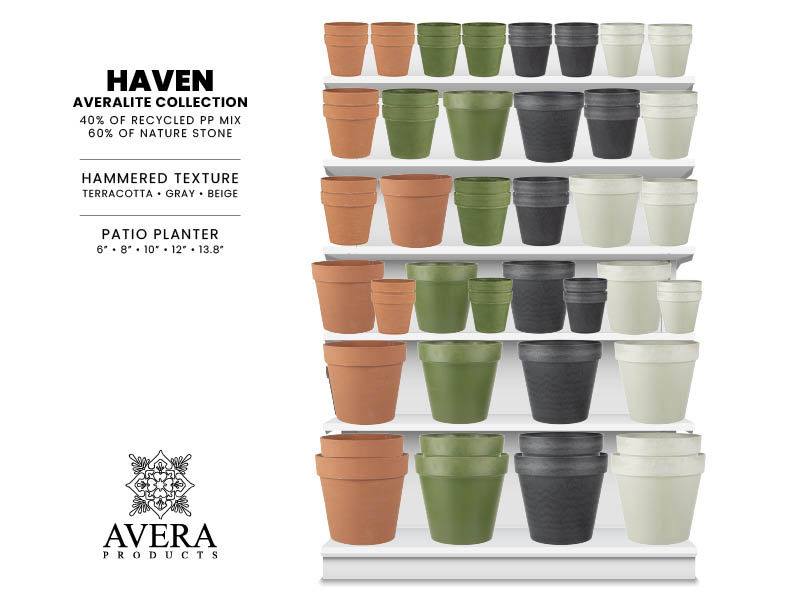top of page

Product Development
As the Creative Director, I guide product development from concept to launch, ensuring alignment with brand identity and market trends. My role involves ideating and shaping the product's vision, collaborating closely with designers, engineers, creative, marketing, and sales teams to refine the product's functionality, and user experience.
Product development direction includes: Define gaps in product line, guide trend research and ideation, review and approve prototypes, provide strategic feedback, and ensure consistency across all marketing touchpoints throughout the product launch.
Ceramic Planter Product Development


Cabana German Ceramic Collection
The Home & Garden product collection was missing a trend-forward, modern ceramic planter line that would serve to increase our product offering. By identifying this need, developing the products, and adding them to our overall offering, we were able to get placement in several big box stores and privately-owned home & garden stores.
Cabana German Ceramic Planogram
The Cabana German Ceramic Planogram was developed for big box home and garden stores. The colors, sizes and shapes of the planters featured were chosen to maximize sales on a 4ft gondola shelf.
Choosing products for this planogram was a strategic process that involved several factors so as to optimize the layout, presentation, and profits of the products in a highly-competitive retail space.
MARKET TRENDS: Analyzing competitor offerings helps in selecting products that can compete effectively in the market.
GAP ANALYSIS: Identifying and filling gaps in the product assortment compared to competitors.
PROFIT MARGINS: Items with higher profit margins were selected to maximize overall profits.
PRODUCT VARIETY: A mix of different colors, sizes, and price points was chosen to meet diverse customer preferences.
EYE-LEVEL PLACEMENT: Products placed at eye level feature sizes that are most typically purchased based on consumer sales data.
Choosing products for this planogram was a strategic process that involved several factors so as to optimize the layout, presentation, and profits of the products in a highly-competitive retail space.
MARKET TRENDS: Analyzing competitor offerings helps in selecting products that can compete effectively in the market.
GAP ANALYSIS: Identifying and filling gaps in the product assortment compared to competitors.
PROFIT MARGINS: Items with higher profit margins were selected to maximize overall profits.
PRODUCT VARIETY: A mix of different colors, sizes, and price points was chosen to meet diverse customer preferences.
EYE-LEVEL PLACEMENT: Products placed at eye level feature sizes that are most typically purchased based on consumer sales data.




Reverie German Ceramic Collection
The Home & Garden product collection was missing a trend-forward, modern ceramic planter line that would serve to increase our product offering. By identifying this need, developing the products, and adding them to our overall offering, we were able to get placement in several big box stores and privately-owned home & garden stores.
Reverie German Ceramic Planogram
The Reverie German Ceramic Planogram was developed for big box home and garden stores. The colors, sizes and shapes of the planters featured were chosen to maximize sales on a 4ft gondola shelf.
Choosing products for this planogram was a strategic process that involved several factors so as to optimize the layout, presentation, and profits of the products in a highly-competitive retail space.
MARKET TRENDS: Analyzing competitor offerings helps in selecting products that can compete effectively in the market.
GAP ANALYSIS: Identifying and filling gaps in the product assortment compared to competitors.
PROFIT MARGINS: Items with higher profit margins were selected to maximize overall profits.
PRODUCT VARIETY: A mix of different colors, sizes, and price points was chosen to meet diverse customer preferences.
EYE-LEVEL PLACEMENT: Products placed at eye level feature sizes that are most typically purchased based on consumer sales data.
Choosing products for this planogram was a strategic process that involved several factors so as to optimize the layout, presentation, and profits of the products in a highly-competitive retail space.
MARKET TRENDS: Analyzing competitor offerings helps in selecting products that can compete effectively in the market.
GAP ANALYSIS: Identifying and filling gaps in the product assortment compared to competitors.
PROFIT MARGINS: Items with higher profit margins were selected to maximize overall profits.
PRODUCT VARIETY: A mix of different colors, sizes, and price points was chosen to meet diverse customer preferences.
EYE-LEVEL PLACEMENT: Products placed at eye level feature sizes that are most typically purchased based on consumer sales data.










Resin Planter Product Development


Elemental Averalite Resin Collection & Planogram
The Elemental Averalite Collection was developed for big box home and garden stores. The colors, sizes and shapes of the planters featured were chosen to maximize sales on a 4ft gondola shelf.
Choosing products for this planogram was a strategic process that involved several factors so as to optimize the layout, presentation, and profits of the products in a highly-competitive retail space.
MARKET TRENDS: Analyzing competitor offerings helps in selecting products that can compete effectively in the market.
GAP ANALYSIS: Identifying and filling gaps in the product assortment compared to competitors.
PROFIT MARGINS: Items with higher profit margins were selected to maximize overall profits.
PRODUCT VARIETY: A mix of different colors, sizes, and price points was chosen to meet diverse customer preferences.
EYE-LEVEL PLACEMENT: Products placed at eye level feature sizes that are most typically purchased based on consumer sales data.
Choosing products for this planogram was a strategic process that involved several factors so as to optimize the layout, presentation, and profits of the products in a highly-competitive retail space.
MARKET TRENDS: Analyzing competitor offerings helps in selecting products that can compete effectively in the market.
GAP ANALYSIS: Identifying and filling gaps in the product assortment compared to competitors.
PROFIT MARGINS: Items with higher profit margins were selected to maximize overall profits.
PRODUCT VARIETY: A mix of different colors, sizes, and price points was chosen to meet diverse customer preferences.
EYE-LEVEL PLACEMENT: Products placed at eye level feature sizes that are most typically purchased based on consumer sales data.
Solace Averalite Resin Collection & Planogram
The Solace Averalite Collection was developed for big box home and garden stores. The colors, sizes and shapes of the planters featured were chosen to maximize sales on a 4ft gondola shelf.
Choosing products for this planogram was a strategic process that involved several factors so as to optimize the layout, presentation, and profits of the products in a highly-competitive retail space.
MARKET TRENDS: Analyzing competitor offerings helps in selecting products that can compete effectively in the market.
GAP ANALYSIS: Identifying and filling gaps in the product assortment compared to competitors.
PROFIT MARGINS: Items with higher profit margins were selected to maximize overall profits.
PRODUCT VARIETY: A mix of different colors, sizes, and price points was chosen to meet diverse customer preferences.
EYE-LEVEL PLACEMENT: Products placed at eye level feature sizes that are most typically purchased based on consumer sales data.
Choosing products for this planogram was a strategic process that involved several factors so as to optimize the layout, presentation, and profits of the products in a highly-competitive retail space.
MARKET TRENDS: Analyzing competitor offerings helps in selecting products that can compete effectively in the market.
GAP ANALYSIS: Identifying and filling gaps in the product assortment compared to competitors.
PROFIT MARGINS: Items with higher profit margins were selected to maximize overall profits.
PRODUCT VARIETY: A mix of different colors, sizes, and price points was chosen to meet diverse customer preferences.
EYE-LEVEL PLACEMENT: Products placed at eye level feature sizes that are most typically purchased based on consumer sales data.




Haven Averalite Resin Collection & Planogram
The Haven Averalite Collection was developed for big box home and garden stores. The colors, sizes and shapes of the planters featured were chosen to maximize sales on a 4ft gondola shelf.
Choosing products for this planogram was a strategic process that involved several factors so as to optimize the layout, presentation, and profits of the products in a highly-competitive retail space.
MARKET TRENDS: Analyzing competitor offerings helps in selecting products that can compete effectively in the market.
GAP ANALYSIS: Identifying and filling gaps in the product assortment compared to competitors.
PROFIT MARGINS: Items with higher profit margins were selected to maximize overall profits.
PRODUCT VARIETY: A mix of different colors, sizes, and price points was chosen to meet diverse customer preferences.
EYE-LEVEL PLACEMENT: Products placed at eye level feature sizes that are most typically purchased based on consumer sales data.
Choosing products for this planogram was a strategic process that involved several factors so as to optimize the layout, presentation, and profits of the products in a highly-competitive retail space.
MARKET TRENDS: Analyzing competitor offerings helps in selecting products that can compete effectively in the market.
GAP ANALYSIS: Identifying and filling gaps in the product assortment compared to competitors.
PROFIT MARGINS: Items with higher profit margins were selected to maximize overall profits.
PRODUCT VARIETY: A mix of different colors, sizes, and price points was chosen to meet diverse customer preferences.
EYE-LEVEL PLACEMENT: Products placed at eye level feature sizes that are most typically purchased based on consumer sales data.






bottom of page